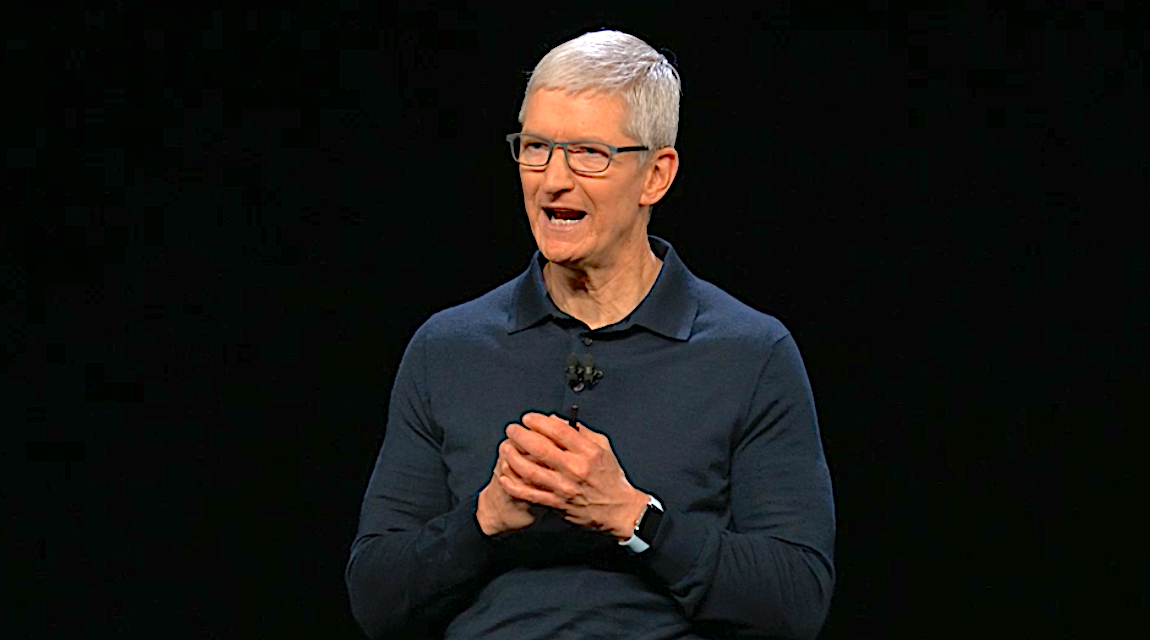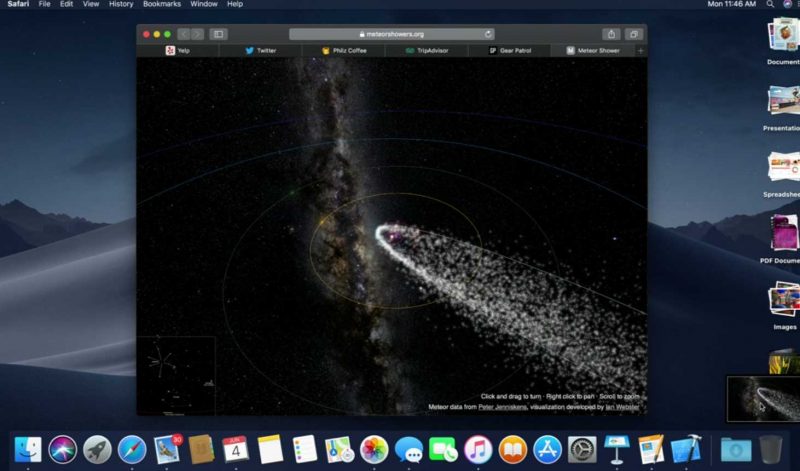 EMERGING TECH
EMERGING TECH
 EMERGING TECH
EMERGING TECH
 EMERGING TECH
EMERGING TECH
Apple Inc. threw a bash today for developers with its Worldwide Apple Developers Conference in San Jose, California, introducing a raft of software updates for iPhones and other devices but almost nothing in the way of surprises.
The lineup of announcements includes iOS 12, the next-generation of iOS for mobile; ARKit 2, an augmented reality software development kit that allows mobile devices to overlay 3-D images onto the real world; and updates to Apple’s artificial intelligence agent Siri.
“We have developers here from 77 countries, that’s more than ever before, and more than 20 million Apple developers from around the world,” Apple Chief Executive Officer Tim Cook (pictured) crowed to a cheering audience from the stage.
Next month is the Apple App Store’s 10-year anniversary. Apple’s app store is the world’s largest app marketplace with over 500 million weekly visitors. This week, the money developers have earned through the app store will exceed $100 billion.
Showing Apple’s vision to educate people in programming and bring development to the hands of more people, Cook said Apple’s education initiative, “Everyone Can Code,” is now available to tens of millions of students around the world. “We want more people to learn the power of code, and it all starts with Swift and Swift Playgrounds,” he said. According to Cook, Swift is the fastest growing programming language, assessment confirmed by industry analyst firm RedMonk’s language growth analysis for 2018.
The next release of iOS will include as many improvements as possible and support older devices, Craig Federighi, Apple’s senior vice president of software engineering, told the audience. For example, iOS 11 still supports iPhones released in 2013. Currently, 81 percent of all active iOS devices run the current release, compared with 6 percent of devices using Google Inc.’s Android, the company pointedly noted. Most important, the next iOS update will be available on all the same devices as the previous release.
Apple will focus on performance in iOS 12. Under stress, apps launch twice as fast with these performance improvements. This is achieved by a processor performance metric within the OS designed to provide bursts of power when needed that are designed to drop off quickly.
Apple focused heavily on augmented reality at WWDC this year, as the long-simmering technology that made the hit game “Pokemon Go” possible, shows signs of taking off before long. “Augmented reality is transformational technology,” said Federighi. “It enables all kinds of experiences, changing the way we have fun and the way we work.”
Apple has teamed up with the Walt Disney Co.’s Pixar division on a new file format called Universal Scene Description, or USDZ, a zero compression, unencrypted zip archive. It’s a format for storing 3-D objects and animations that can be rapidly modeled and placed into the real world by developers of AR apps. To push the envelope of AR and support for USDZ, Apple has partnered with Adobe Systems Inc., a company well-known for graphics software.
Adobe Chief Technology Officer Abhay Parasnis said the company will bring native USDZ support to Adobe’s Creative Cloud. The Creative Cloud will also launch a new AR experience platform that will allow developers to bring images, models, text and such directly into an AR environment using a what-you-see-is-what-you-get design tool for iOS 12.
With USDZ assets, it’s possible to place fully interactive 3-D models into documents and web pages. The result is a way for news organizations and retailers to allow users to experience objects in three dimensions. With a single click, it is possible to bring fully animated 3-D objects out of a page on a mobile device and place them into the “real world” using AR.
As a demonstration of the power of AR, Apple will introduce Measure, an app for iOS that uses the camera and sensors on the phone to accurately measure objects a device can see. It’s an AR app that turns the phone into a virtual measuring tape that can make measurements in three dimensions. The software can also automatically detect rectangles and other shapes, such as picture frames and photos, and provide measurements.
To make all this possible, Apple announced ARKit 2, the next generation of Apple’s augmented reality software development library for mobile devices. This library will include improved face tracking, realistic rendering, environment recognition and shared experience support. To show this off, Apple has released a shared experience beta app that allows users to set up a table of stacked blocks and knock them down using slingshots.

A Lego village in augmented reality presented at WWDC 2018.
To show off ARKit 2’s multiuser support, Martin Sanders, the director of innovation at the Lego Group, showed off how a Lego block toy construction could be expanded into a full city block that players could then add Lego figures to and play games.
He then ran around the city, entered into buildings and ran missions in the city. During the demonstration, a building caught on fire and a Lego fire truck – fully rendered in AR – was dispatched to put out the fire and a helicopter rescued clowns trapped on the roof. “With a single Lego creation and ARKit 2, it really opens up those creative play possibilities,” said Sanders.
The new iOS 12 will also improve photo searching. Currently search can be used to find “flowers” or “dogs.” Now with iOS 12, search will automatically categorize and prepare search suggestions, allow users to seek images from specific places, including broad categories such as “museum” or “park,” and refine searches based on context instead of just metadata.
Using end-to-end encryption and networked devices in proximity, people at the same event can share photos with one another to help people receive a more complete gallery of photos from a time together.
As voice interfaces continue to gain in popularity, Apple also weighed in with improvements to its Siri digital assistant. Users will now be able to assign their own custom voice activated lines with Siri. For example, someone could add “I lost my keys,” to Siri as a trigger and, if a person were to lose the keys, he or she could tell Siri and the app would cause their keys to ring, making them easier to find. This system is called Shortcuts.
On the lock screen, Siri can now surface suggestions based on a person’s schedule and location. Siri could provide the ability to easily make an order at a coffee shop before a person goes there for the day. Or, in a movie theater, Siri could suggest turning off or hushing the phone as a courtesy to other patrons.
With Shortcuts, users could put together reminders and constellations of information fitting to a particular location, events or activities. These details can be customized in Siri Shortcuts based on the context surrounding that activity. For example, users could set up a Shortcut when going to (or at) the beach that includes weather, surf reports, traffic reports and other information for an at-a-glance report.
Shortcuts can also be set to trigger a set of actions, for example contacting people, connecting to a smart thermostat at home to set temperature or tune into a particular radio station.
A lot of technology critics lately have been hammering tech companies about the addictiveness of their products and services. So Apple, which was targeted in particular by some high-profile shareholders recently, offered new features to help address the problem. To reduce distractions, Apple has put together a comprehensive set of built-in features to help balance information overload and focus when using mobile devices.
First is Do Not Disturb mode, which will calm down the phone during particular times of day, for example, at bedtime when less-relevant information should be muted. Now, DnD can also be activated at any time, triggered for a period of time, activated during an event, or end only after leaving a particular location.
The operating system and Siri will allow users more control over managing notifications and iOS devices will now receive support for grouped notifications. Incoming notifications can be grouped not just by application, but category, context and user-defined metrics.
Finally, users can see how they use their phone over the week, including graphs of what apps are the most talkative, how often the user is tapping at their phone, picking up their phone or otherwise interacting with the device. iOS will also allow users to set time limits, or warnings, allowing them to better control their time on the phone — for example, for people who want to be warned if they’ve been on Facebook for an hour and it’s time to go do something else.
Apple didn’t forget its onetime claim to fame, its Mac computers, which many longtime Apple users have complained haven’t gotten a lot of love in the past couple of years. This year, MacOS will be getting an update called “macOS Mojave,” leaving behind the mountainous names for MacOS releases for its 10.14 version.

MacOS Mojave in dark mode, demoed at WWDC 2018.
This new release adds a native “dark mode” to the OS, allowing users to change the look and feel of the entire user interface to darken the display and dim harsh or bright elements. This is especially good for users working in dark environments. According to Federighi, developers especially will appreciate dark mode, since it extends to Apple’s development environments as well.
Mojave will also add something called “dynamic desktop.” This feature will cause the desktop and theme of the OS to change throughout the day, changing the theme, subtly or profoundly, during morning, afternoon and evening. Desktops can also be decluttered using something called Desktop Stacks, allowing automatic “folders” of icons that stack and organize themselves by category or context.
Finder, the search and display function for files in MacOS, is being updated as well. The sidebar will now support full metadata for images, multimedia, documents and files, making it easier to understand what’s being looked at when browsing through the disk drive.
Mojave also makes QuickLook, a preview app within MacOS, more powerful by integrating Markup, which is editor software that recognizes numerous types of media. This means that people can preview documents and do context-aware editing right from that preview. For example, an image could be magnified, modified, cropped or turned, or a document could be edited and saved.
Federighi also spoke to the audience about Metal, Apple’s graphics library that allows programmers to take advantage of graphics cards. This is the same software that allows games such as “Fortnite” to play in high definition on MacOS devices. To demonstrate Metal’s power, he displayed a fully rendered scene from a Unity game-engine scene including postprocessing effects, done live from a MacBook.
In a nod to the intense interest among developers in artificial intelligence, Federighi also introduced Create ML, a machine learning trainer that allows developers to use their knowledge of the Swift programming language and the power of graphics processing units. With Create ML, a developer can train a machine learning model to recognize objects from thousands of images in record time. This software is connected to Core ML, Apple’s machine learning app integration software.
THANK YOU